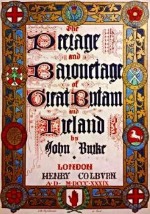English Aristocracy | England 101
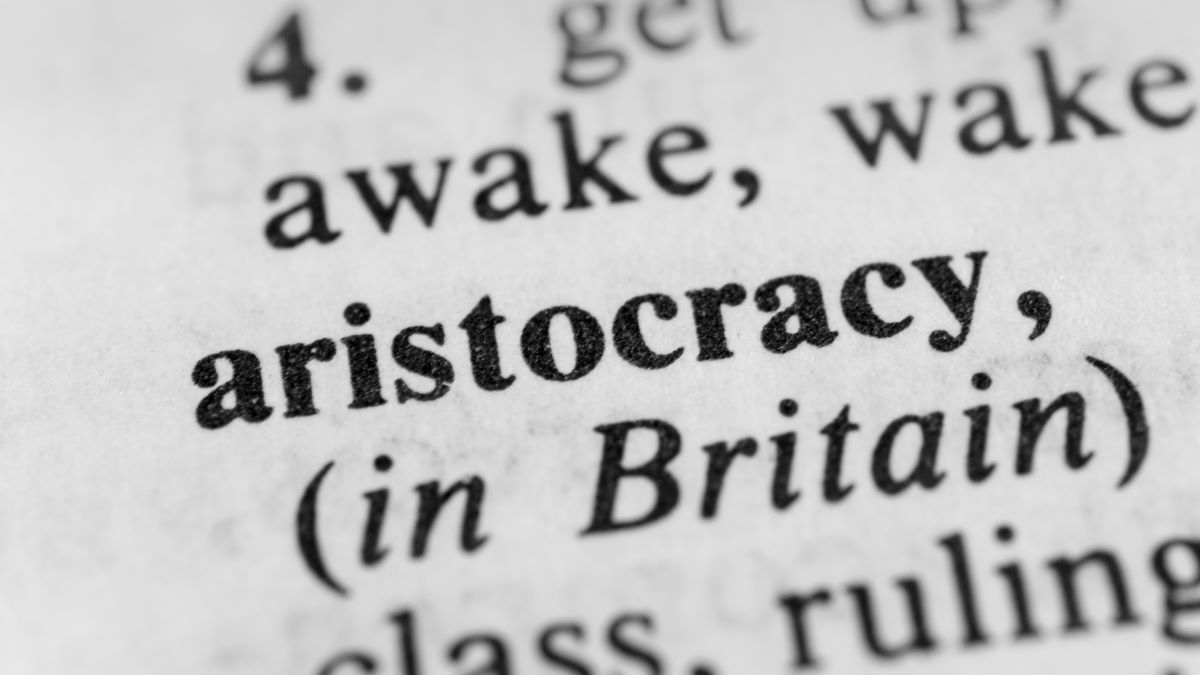
Think of the English Aristocratic class system as the extended Royal Family. Many families that are ‘blue-bloods’ have ties to the Royal family, some going back centuries. And in Britain’s tumultuous history, sometimes those families ended up on the throne themselves. A history of the British Royal Family is the history of the English aristocracy, and it’s a history that continues to play out to this day. In this article, we’ll explore the makeup of the aristocrats and how they relate to the real royal family.
The Royal Source
|
Queen Elizabeth II is a very unique individual in that she can directly trace her lineage all the way back to William the Conqueror in 1066. She is directly related to every Monarch who has come before her. Now, the Royal family tree has taken a few diversions over the years, and there are instances where religion forced a job left or right in the family tree, but in a sense, the British Royal Family is almost 1,000 years old. There are so many branches and so many people that can claim lineage from Britain’s various Queens, Kings, bastards and relatives. It’s often quite fun to search down your family trees and discover you are related, albeit in a small way, to one of the longest-lived families on the planet. The source of all titles is the reigning Monarch. The sovereign is known as the ‘fount of honour.’ The titles, generally, once created outlive the Monarch perpetually (there are some that don’t which we’ll get to later). A title is called a peerage. Hereditary peerages pass down through the family, usually to the firstborn son, but this also depends on the terms of the peerage when it’s granted by the Monarch. Peerages are a very rare honour these days, and when they’re handed out, it’s usually only life peerages. The Queen rarely grants hereditary titles anymore. |
Credit: Express.co.uk |
Oldest Titles and Where They Come From
The oldest title in the British peerage system is the Earl of Arundel, which has been in existence since 1138. The current holder is Edward Fitzalan-Howard, the 18th Duke of Norfolk. The oldest Dukedom is the Duke of Cornwall, which is a title usually held by the Prince of Wales as the Heir to the throne (he can derive an income from its assets, but he cannot ever sell them). The oldest Viscountcy is the Viscount of Hereford, created in 1550. The oldest baronetcy is the Baron de Ros, which was created in 1264. Some of these families go back quite a long way! You may even have a relative in your family tree!
The Peerage
The Peerage of Great Britain comprises of titles created after the Acts of Union in 1701 when Scotland, England, and Wales came under one crown. It replaced the separate Peerages of England, Scotland, and Ireland. Though this was when the ‘new’ peerage started, it subsumed all the previous peerages, so all the old titles simply continued. The current peerage system has five levels in order of precedence: Duke, Marquess, Earl, Viscount, and Baron.
Duke
The first Dukedomes were created by King Edward III; he created the Dukedoms of Cornwall, Lancaster, and Clarence in 1337. Dukes are the highest rank of peerage below the sovereign and are always seated next to the Monarch at state occasions. At the current time, there are roughly 30 dukedoms in the UK peerage, with 10 of them being Royal Dukedoms, which are held by members of the Royal Family (and thus are not hereditary in most cases). For non-royal dukes, the precedent rank goes in order of creation, meaning that the oldest non-royal duke is the most senior. When you address a Duke, the correct form for most dukes and duchesses is “Your Grace”.
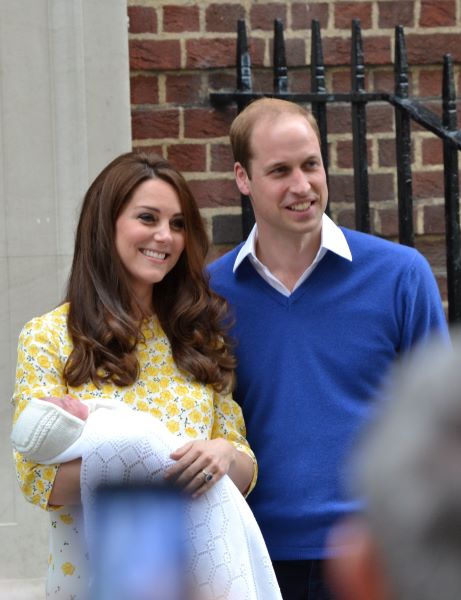 Prince William, Duke of Cambridge and Kate Duchess of Cambridge
Prince William, Duke of Cambridge and Kate Duchess of Cambridge
Credit: Shutterstock, S. Kozakiewicz
Marquess
The Plantagenet King Richard II created the first Marquessate when he appointed Robert de Vere, 9th Earl of Oxford, as the first Marquess of Dublin in the year 1385. The title of Marquess is below a duke, but one level higher than an earl. King George V styled most of his relatives as Marquesses after they gave up their German titles during World War I (to appear more patriotic) and the last Marquess created was the Marquess of Willingdon in 1936, none have been bestowed since. A marquess or marchioness is addressed as “The Most Honourable” or “My Lord Marquess/Madam”.
Earl
As mentioned earlier, “Earl” is the oldest form of peerage dating back to pre-Norman times. The Norman equivalent was a Count, though that was not continued under King William I when he conquered Britain. However, the female title of Earl is actually countess, which is a holdover from those Norman times. An Earldom was usually associated with a specific place in the kingdom, but over time, the earldoms came to be less associated with shires and more with towns, local landmarks, or surnames. The proper address for earls and countesses is “The Right Honourable Earl/Countess” and “My Lord/Madam”.
Viscount
This title is much more rare, with only a few granted in history. The fourth rank in the British peerage system, a viscount or viscountess is typically named in association with a specific place. The title originated under the Carolingians in France and was carried over to Britain by the Normans after William’s invasion, though the use of it wasn’t recorded until 1440 when King Henry VI created John Beaumont as Viscount Beaumont. Viscounts and vicountesses are often addressed as “My Lord” or “Madam” rather than by their title.
Baron
This is the most common peerage title, and the one most likely to be granted today (usually as a life peerage). There are Barons and Baronesses. There are thousands of barons throughout Britain these days. That also makes this the lowest rank of the peerage and was created by the Normans as a mostly administrative position within the “barony”, or feudal tenure. In Scotland, the title was slightly different and became that of “thane”, prominently remembered now from the play Macbeth. Barons were expected to be loyal to the king and serve as military commanders at the Monarch’s command. It’s often said that true political power has come from the barons more than any other title. It was the barons who forced King John I to seal the Magna Carta, and it was the barons who formed the first parliament. Over time, baronies became less tied to the land and more products of royal creation. The proper title is typically “Lord” or “Lady”, and the form of address is “My Lord” or “Madam.”
Life Peerages
Most titles created today are life peerages, meaning that the title relinquishes back to the crown upon the death of the holder. After World War II, it’s been very rare for a hereditary peerage to be granted by Queen Elizabeth II. Times change and hereditary titles are seen as out of step with a more modern Britain. The Queen can create as many life peerages as she likes, however in practice, she only appoints those who are recommended to her by her government. Most life peerages are a gift for long service in the British public interest. It’s common for retired politicians to be given one - for example, the late Margaret Thatcher was made a Baroness, a title she held until she died (and she was very active in the House of Lords). They can also be used as a political tool to stock the House of Lords with political allies, though this is rarely the case.
The House of Lords
The House of Lords has evolved considerably in its existence. In a country that considers itself a modern democracy, it’s a bit strange to have a law-making body that consists of hereditary titles. The British have tried to change this over the years. The biggest change came into force in 1999, when most of the hereditary peers were stripped of their right to sit in the House of Lords. Now they are limited to 92 hereditary peers in the Lords, which they elect from amongst themselves - which has to be one of the strangest election campaigns! Now, most of the peers in the House of Lords are either life peers appointed by the reigning Monarch or the bishops of the Church of England. These reforms haven’t gone far enough for some, and there have been plans in the works to get rid of the Lords all together and replace it with an elected Senate. But the plans always come to nought. It would risk any new body competing for power with the House of Lords (unlike the American House and Senate, The Lords and Commons are not co-equal).
These days the House of Lords is primarily a consultatory body. It takes the laws made by the House of Commons and changes them to suit English and British law. Important sub-committee consult with experts in industry and law. It plays a very important role in the lawmaking process. The House of Lords, in practice, cannot stop a law being put into place by the House of Commons, in fact, the Commons can use something called the Parliament Act to overrule the House of Lords in any manner. Still, despite their real power having been stripped away, the Lords still play an important role in English and British governance.
Peers in the House of Lords are not paid a salary like their counterparts in the House of Commons. Instead, they are paid a daily allowance of around £300 per attendance day (or £150 per attendance day if they choose the reduced allowance). To claim this, they merely have to show up and report that they’re there. But it’s not enough money to maintain a stately home on! So many Lords and Ladies who claim the allowance simply serve in the Lords in the public interests, rather than their own.
 The House of Lords, England, logo
The House of Lords, England, logo
Credit: https://housesofparliament.tal.net
Titles in the House of Commons
Previously there was no restriction on someone with a title sitting in the House of Commons, but this created issues when generally they should be in the House of Lords. This has changed now and anyone with a title, cannot now sit in the House of Commons. This means that if a hereditary peer wishes to serve in the House of Commons, they will have to disclaim their title and put it into abeyance. This usually puts the title on pause until their death (when it will then pass to their children). While Lords and Ladies cannot sit in the Commons, they can serve in Her Majesty’s government in the cabinet and other roles. But it has been a very, very long time since a Prime Minister was a Lord of any kind. Their power, these days, must come from the people.
Knighthoods
Knights and Dames are not peers of the realm. These are honours, and when they’re awarded, they have no hereditary rights whatsoever. Knighthoods are usually a reward for good works and service to the country. They are at the bottom of the order of precedence but still well respected. You can still serve in the House of Commons with a Knighthood or Damehood.

Medieval Knight's armour
Credit: Shutterstock.com, Atmosphere1
Land/Castles/Houses
Because of popular entertainment, we most often associated a titled person with the stately home or castle that they own. In some cases, their title will correspond to the current home of the titleholder. But in many cases, the title has nothing to do with where their stately home is located. For example, the Duke of Devonshire’s seat is in Derbyshire, which is quite far away from Devon! The Duke of Norfolk lives in Arundel Castle, which is in the West Sussex. The geographic title of a place used to mean a great deal - in fact, they usually held seats in the House of Commons based on this. But nowadays the geographic location of a title has little meaning. When a Life Peer is given a title, usually they pick a place that is special or important to them. It really only has meaning for them and doesn’t change anything or come with a stately home. The property has long been separated from the title.
Robes and Coronets
A Peer, whether they’re a life peer or hereditary Peer, are allowed to wear special robes on state occasions. Peerage robes are currently worn on certain ceremonial occasions and come in two varieties: Parliament robes, which are worn on ceremonial occasions in the House of Lords (such as at a peer’s induction to the house and at the state opening of parliament). The second type are the Coronation robes and are worn by peers at the coronations of monarchs. These robes are more special and their features differ slightly according to a peer’s rank. They will often only be worn once in their life, if at all.
Monarchs aren’t the only ones who get to wear crowns. Peers of the Realm get to wear Coronets, which are small crowns. They wear them only on one occasion: the crowning of a Monarch. The coronet varies based on the rank of the Peer. These robes and crowns are very expensive and are generally only produced by special outfitters like Ede & Ravenscroft. The Robes and Crowns for Elizabeth’s Coronation cost £1250 in 1953, which is about £40,000 in today’s money. Not a cheap outfit! But it’s an occasion that often only comes about once in a Peer’s lifetime. Usually, the robes and coronets are on display as their respective stately homes.
Heraldry
|
Once you’ve got a title, it’s time to get a Coat of Arms. Coats of Arms are issued by the College of Arms in London. The College of Arms is the official heraldic authority for England, Wales, Northern Ireland and much of the Commonwealth including Australia and New Zealand. If they don’t approve the Coat of Arms, it’s not a real Coat of Arms. Coats of Arms belong to specific individuals with a title or and families with a title, and there is no such thing as a Coat of Arms for a family name. From their origin in the twelfth century to the present day, Coats of Arms have been borne by individuals, families and corporate bodies as marks of identification. New Coats of Arms since the fifteenth century have been granted both to individuals and corporate bodies by the senior heralds in Royal service, the Kings of Arms. A Peer will often use the Coat of Arms on their letterhead and in the architecture of their home. For those of you who don't have an official Coat of Arms, fear not! You can still try yourself at creating your own family crest to represent your own family with our Family Crest Generator. They may not be 'College of Arms official' but they can still be official in your family. And don't forget to show us your creations on our England101 Facebook page! |
An example of a family crest for the Smith Family |
The Season
The Season is the time of year when all the major events often attended by those in the aristocracy take place. The aristocratic year revolves around the social Season. Often, families would leave their country homes and go into London for the major events of the year (along with their staffs as well). The calendar revolves around parties, dinners, charity balls, and debutantes being presented to the reigning Monarch. There was also a series of major events, often attended mostly by the upper classes that took place. Such as: Cheltenham Festival (March), the Grand National (April), The Boat Race (April), Badminton Horse Trials (May), Chelsea Flower Show (May), Epsom Derby (June), Royal Ascot (June), Test matches at Lord’s (July), Wimbledon (July), Henley Royal Regatta (July), Edinburgh Festival Fringe (August) among others, usually ending with Goodwood Revival (September). There are many other events, as well. Most of these events still take place today and are well attended by the upper classes. Attendance to them has opened up over the years, but buying the ‘right’ equipment - i.e. the right fashions and the right fancy hats - can get quite expensive.
The most important part of the Season was when young women of the various aristocratic families were presented to the reigning Monarch as debutantes. This marked the important time in their life when they were now eligible to be married off into the other families. It was essentially a marriage market. Once you were ‘presented’ you would then attend a series of parties where you would meet suitable bachelors of a similar class. While these days, ladies still have a bit of a ‘coming out’ - the presentation of the Debutantes ended in the 1950s because of the regressive nature of the whole concept.
Girls in Pearls
While Debutantes are a thing of the past, there is still an important internal marriage market amongst the upper classes. It’s very important for ladies - and it should be stressed, to men as well - to marry the ‘right’ sort of people. One publication that helps keep up the walls of aristocracy is the publication Country Life, which is a weekly magazine dedicated to the country pursuits of the upper classes. Each issue features a young woman on the frontispiece, who is either eligible to be married or is about to be married - they call this the ‘girls in pearls’ page. The magazine itself is a peon to upper-class values of the English countryside.
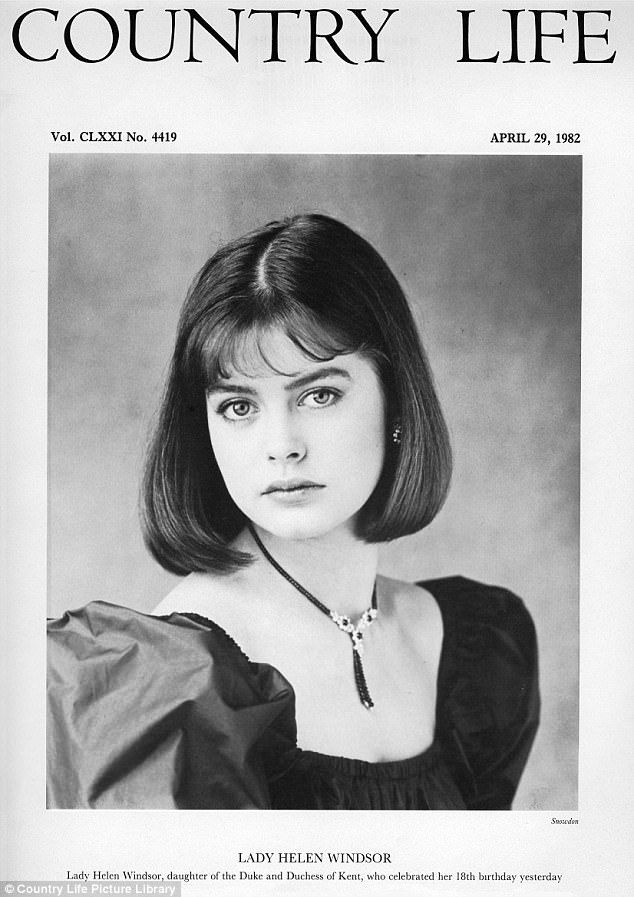 Lady Helen Windsor, Country Life cover, April 29 1982
Lady Helen Windsor, Country Life cover, April 29 1982
Credit: dailymail.co.uk, @Country Life Picture Library
The Countryside
While most ‘great’ families no longer have the huge landholdings they once did, most titles and upper-class people still live in the countryside, and country pursuits play a major role in their way of life. Often they come into the city for special events but actually, live in the shires of England or Scotland. There they live in country piles, in various states of disrepair (though many are assets of national heritage and popular tourist attractions). What do they do in the country? They have parties. They sponsor local charitable events. Some go hunting. Mostly, they stay out of the way and try to keep things private.
New Money
The older your family is, the more accepted you are in the upper classes in England. Even the upper classes are divided amongst those who come from ancient landed families and those that are ‘new’ money. In the order of precedence at major events and in the attitudes of aristocrats towards each other, the age of your titles and holdings comes into great importance. It’s also maddening. It’s possible for a family that made it’s wealth in the Victorian era and gotten its titles then, to still be considered ‘new’ money. A lot of new money has flooded into Britain in the last decades with many foreigners buying upcountry homes and also buying their way into British upper society. They’ll never really be accepted. You can’t buy your way in. Breeding is very important in these circles, so if you can find an aristocratic relative in your family trees, then that’s half the battle!
Wealth
While many of these ‘great’ families are exceedingly wealthy, you may be surprised to learn that many of them are, in fact, quite poor. For example, they may appear wealthy if they own a stately home, but that stately home has enormous upkeep costs, and as most of the large estates have already been broken up, there simply isn’t an income to support them. Many Lords and Ladies have to work just like the rest of us to support their lifestyles (still, with their networks and backslapping, they are not working as hard as you might think). Many baronetcies are quite poor. And often all an upper-class person has to show for their rank is a title and not much else. But even if you’re not wealthy, being in the upper classes isn’t just about money, it’s about attitude, breeding, and upbringing. That is why the attitude towards new money is so different.
There are a few great estates left in Britain, even some still attached to their great stately homes. But many are now run on a charitable basis to maintain the homes and keep them standing up. Often the entire estate simply keeps the house going as a tourist attraction. Sometimes the family doesn’t even live there anymore, or if they do, it’s in the former servants quarters so the ‘state’ rooms can be opened to the public. Many great houses were donated to the National Trust, who care for them now. Sometimes the families are able to continue living there; sometimes they wash their hands of it.
On your visits to Britain – here's a round-up of stately homes and castles worth visiting that are still with their original families:
|
Credit: Shutterstock, Kevin Eaves |
|
|
Credit: Shutterstock, Anastasia Laptov |
|
|
Credit: Shutterstock, Fulcanelli |
|
|
Credit: Shutterstock, Andrew Harker |
|
|
Credit: Shutterstock, Milosz Maslanka |
|
|
Credit: Shutterstock, Emily Marie Wilson |
|
|
Credit: Broughton Castle Facebook page |
|
|
Credit: Shutterstock, Francesco Bonino |
|
Schools
Britain has a great education system, but there is a completely parallel and separate education system that caters solely to the upper classes. Most countries would call them private schools, but they’re actually called ‘public’ schools in Britain. These schools are spread all over, and they also have their own order of precedence and acceptance in the upper classes. Most are boarding schools, and it’s a common experience for most males in the upper classes to be sent away to school as soon as they’re old enough.
That’s why a lot of British literature and popular media is about miserable aristocratic children. Even Winston Churchill was sent away to school (Harrow). The top school is Eton, located next to Windsor. This is where many former Prime Ministers have been educated as well as Monarchs and princes (from all over the world). It’s a very exclusive school. Getting an Eton education is an open door to success in the upper classes in Britain. There are other prominent schools such as Westminster, Harrow, Winchester, Rugby (where the game was invented), Charterhouse, and Shrewsbury.
Most of these schools are boarding schools, but some of them are day schools that offer the opportunity for students to attend during the day. But to get the true British Public School Experience, it has to be a boarding school. The bonds you form with your fellow classmates will last your entire life - and help you with your entire life. Why do you think Harry Potter is so popular?
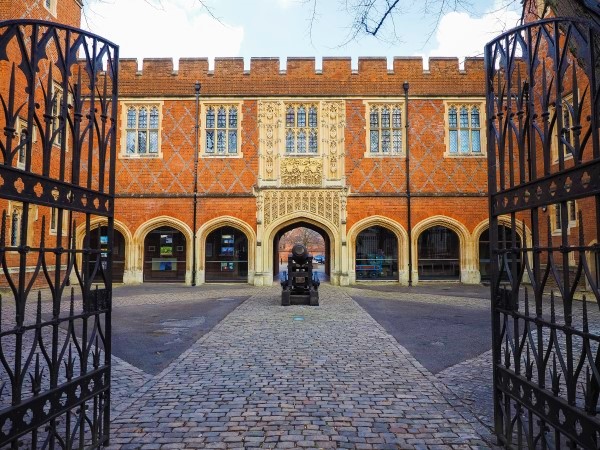
The entrance of Eton College, near Windsor. Credit: Shutterstock, Fotogenix
Shopping Habits
The shopping habits of the upper classes usually follow the habits of the reigning Royal Family. Many of the outfitters patronized by the upper classes have been around for centuries, and just like their customers, they have a pedigree to them. The most popular ones are those that have Royal Warrants - those are special dispensations from members of the Royal Family which allow them to supply the various Royal Households. Companies like Lock Hatters and Hunter Boots and Fortnum and Mason and Aston Martin all have Royal Warrants (there are currently 686 active Royal Warrants). Those companies then are popular with the upper classes. Some companies, like Harrods, will service the upper classes but are not used by the Royal Family (there is some bad family history there!). They’ll often have their shopping done for them, by the companies or their staffs. And when you’re that wealthy, these stores come to you. Even the Queen never goes out shopping - they come to her - like her personal tailors.
Cars
There is one car that is most associated with the upper classes currently, and that is the Land Rover. Nicknamed the ‘Chelsea Tractor’ because of its popularity in this expensive part of London, the Land Rover is a necessity for anyone seeking to join the upper classes. Not only is the vehicle a status symbol, but it’s also useful for all the various country pursuits that aristocrats like to get up to. Many Land Rovers can be customized to your exact specifications. While they like other cars, supercars are not really something the upper classes indulge in. They prefer a classier way to display their wealth if they display it at all. Driving a supercar through country lanes is rather unseemly, and something that separates ‘old money’ from ‘new money.’
Posh Places in London
While there are hundreds of castles, stately homes and new homes in the countryside where the British upper classes live, they’ll also usually have a base in London. More often than not, this base is in Kensington & Chelsea, Belgravia or Mayfair. These are the most expensive areas of London, and many families will have had properties there for many years. Even just travelling through the stately streets of this area, you can see the lovely homes along with the nice businesses that cater to them.
Who Are They?
| If you would like to discover who exactly has a title and who they are - check out the book Burke’s Peerage, which is the oldest book that guides you through the various aristocratic families. There are plenty that don’t enter popular discourse because they like to maintain their privacy. This book used to be used as a marriage guide in the high days of the British Empire - you could even see how much an aristocrat was worth! Now, this is not the done thing. If you think you might have aristocratic blood, you can begin your research by looking at Burke's Peerage. If you want an idea of how to properly behave and have manners like the upper classes, Debrett’s Handbook is the ultimate guide to etiquette and the bible for the upper classes on how to behave. Good private school will drill this information into the next generations as they come of age. |
Burke's Peerage, Credit: Burkespeerage.com |

_(2).jpg)
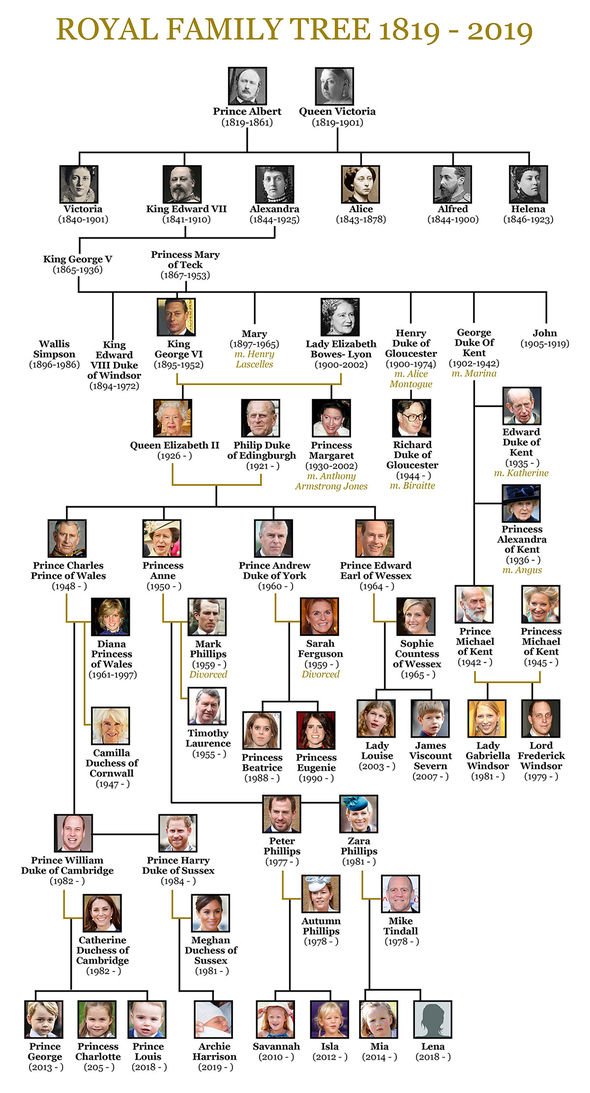 The Queen's Family Tree
The Queen's Family Tree








